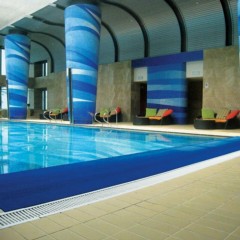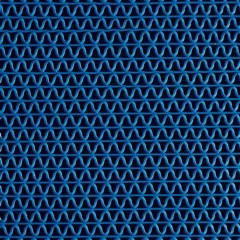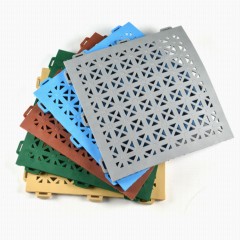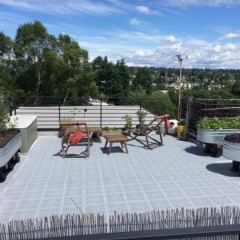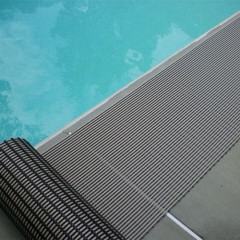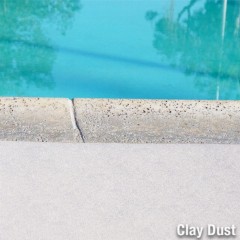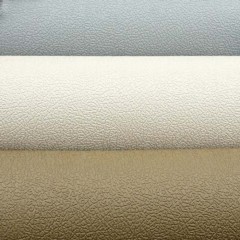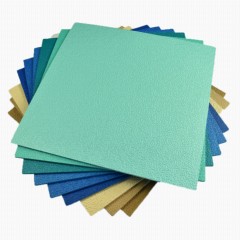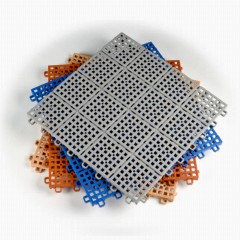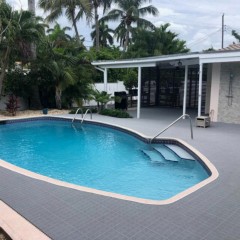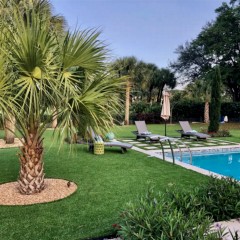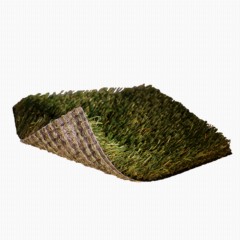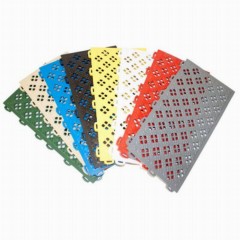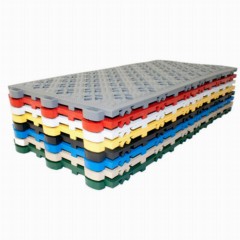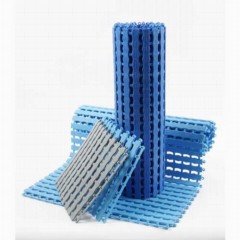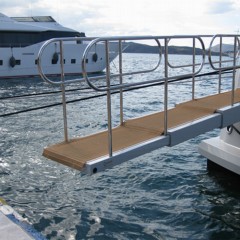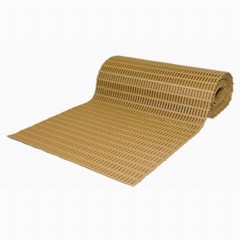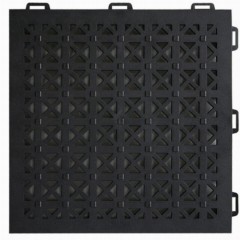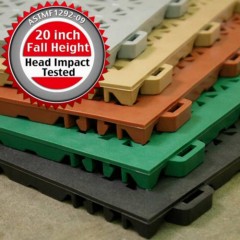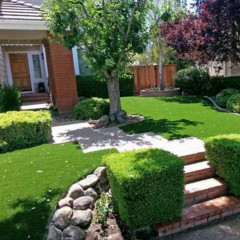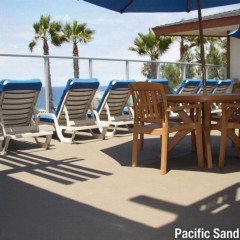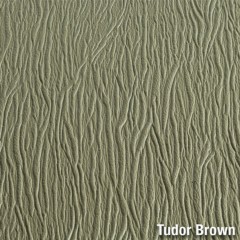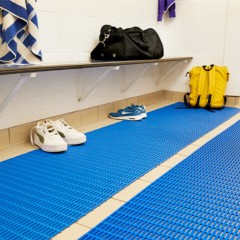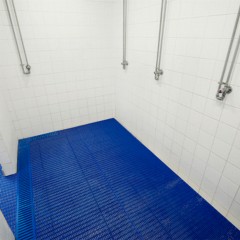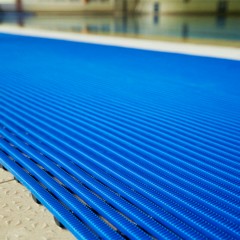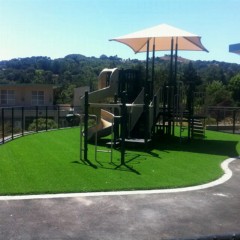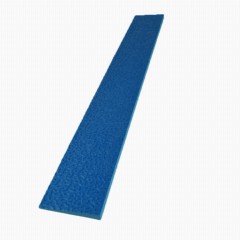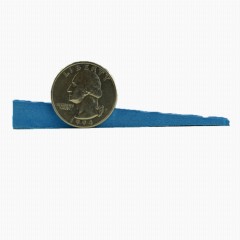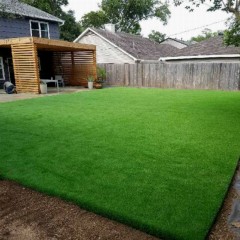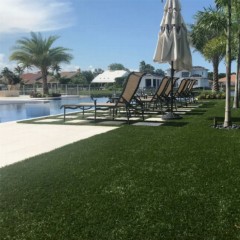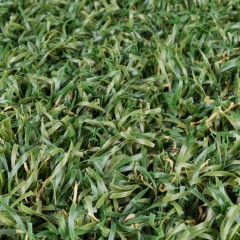Options for Pool Surrounds
If you have a residential swimming pool or are building one at your school, hotel, or fitness center, creating a safe space for people to walk - and for kids to run - near the pool is a must. When you select pool surrounds from Greatmats, you receive access to non-slip surfaces that look great and will stand up to the harsh conditions around the pool from sun exposure and splashes of chlorinated water.
Rather than letting dirt, gravel, and blades of grass make the pool water a mess, choose our tiles for swimming pool surrounds to provide a safe, durable space. Spend more time enjoying your pool and less time worrying about dangerous slips and falls and dirty water when you rely on Greatmats!
Types of Swimming Pool Surrounds
Whether you need swimming pool, sauna, splash pad, or hot tub surrounds, we have the types available to match your needs.
Tiles
Many of our tiles are made for a DIY installation with interlocking edges that don’t require adhesive, while others require a permanent, glue-down installation. Both firm and flexible plastic are available for our tiles.
Matting
Mats are a popular selection as a swimming pool surround because of the size and shape of the mat. A rectangular-shaped mat could easily go along the edges of a hot tub or small pool.
Rolls
Rolls of pool surround material cover a large space quickly and at an economical price for either turf, PVC plastic, or vinyl. Some rolls are made for a temporary installation, while others can be installed permanently.
Materials for Flooring for Pool Surrounds
At Greatmats, we carry pool surrounds that make use of several different materials, so you can match the planned use case and the goals you have for the space with the ideal material.
Polypropylene Plastic
Polypropylene plastic is a firm type of plastic that many people use underneath another type of pool surround flooring to aid in the drainage of water. Our
Roof Open Drainage Tile is highly effective at helping pooled water drain away.
PVC Plastic
PVC plastic is a popular choice around swimming pools because it’s cushioned, flexible, and durable. You can select among several colors of PVC plastic, helping you create the perfect mood around the pool.
Vinyl
Vinyl is a commercial-quality flooring that’s highly durable for use around pools and other wet areas. It can quickly cover a lot of space, simplifying installation.
EVA Rubber Polymers
EVA rubber polymer works well around a pool because it provides a 1-foot fall height rating, a non-slip textured surface, and UV stabilization for outdoor usage. Our
AquaTile Aquatic Flooring 3/8 Inch x 2x2 Ft. product is available in many bright and fun colors to enhance your pool or spa setting.
Turf
When you want a pool surround material that resembles real grass but requires far less maintenance, artificial turf is a great choice. It’s commonly available in rolls that cover big areas fast. It stays green all year round, unlike natural grass.
Benefits of Using Swimming Pool Surrounds
Some of the key benefits of installing our pool surrounds at your residential or commercial swimming pool or hot tub include:
- DIY installation options
- Fits easily over many materials
- Multiple texture patterns available
- Multiple color options
- Perforated and solid designs available
- Slip-resistant, even when wet
- UV stabilization
- Weather resistance
- Moisture resistance
- Cushioned surface
- Residential and commercial options
- Easy to maintain
- Indoor or outdoor installation
Use Types of Flooring for Swimming Pool Surrounds
When installing these products, you can use them in many areas where water is common, including:
- Patio
- Wood deck
- Pool deck
- Pool edges
- Splash pads
- Water fountains
- Locker rooms
- Hot tubs
- Saunas
- Spas
- Hydrotherapy rooms
- Shower areas
- Waterpark
- Playgrounds
- Rooftop patios
- Balconies
Pool Surrounds Q&A
What is the difference between indoor and outdoor pool surrounds?
The primary
difference between indoor and outdoor pool surrounds is the weather exposure they’ll experience. Outdoor pool area flooring must stand up to sunlight, UV exposure, stormy weather, and potential impacts from hail or broken tree branches. Indoor swimming pool surround matting can focus more on aesthetics, slip resistance, and cushioning because weather exposure is not a concern.
How do you prevent pool decking from getting hot?
To
prevent pool decking from getting hot, you can select flooring materials that do not heat up noticeably in the sun, called temperature-stable pool surround tiles. You could try to add shade around the pool by planting trees, adding shade umbrellas and roofs, and adding retractable canopies.
What is the best material to use around a pool?
The
best material to use around a pool is one that can stand up to constant dampness without suffering deterioration. It needs to withstand damage from chlorinated water, too. It should provide traction to reduce the slip risk in damp conditions. PVC plastic, vinyl, and artificial turf are among the best pool area flooring options.
Can you use artificial grass around a pool deck?
Yes,
you can use artificial grass around a pool deck. When used as pool surround tiles and rolls, faux grass offers excellent aesthetics by staying green all year long and by not ending up with dead spots or bare dirt. By using synthetic grass, you don’t have to worry about cut grass blades and other plants ending up in the water, which would create more maintenance work for you.
How much does swimming pool surround flooring cost?
The
cost for swimming pool surround flooring will vary depending on the materials in use and the total coverage area. You could pay anywhere from $300 to $20,000 to build a pool deck and add flooring. To estimate the cost of the flooring for the pool deck, figure out how many square feet you need to cover and then ask our customer service team for some cost estimates.
 $500 /Tile You Save 25%$5.00/sqftShips Out in 1-3 Working DaysShop$365 /sqft You Save 14%Ships Out in 7-10 Working Days SustainableShop
$500 /Tile You Save 25%$5.00/sqftShips Out in 1-3 Working DaysShop$365 /sqft You Save 14%Ships Out in 7-10 Working Days SustainableShop